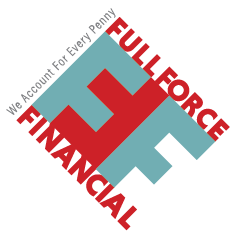Studio Binder – A Good Start For Production In The Cloud
Studio Binder
Studio Binder is a digital platform a few of my clients use in production for managing stuff like call sheets, contact list, script breakdowns, shooting schedules, tasks, calendars and files. It’s a one stop shop for production companies to essentially get rid of the paper that we all get on a regular basis. Instead of dealing with piles of paper and documents that take time to file, this gives us the option of doing it all in one digital platform with minimal effort.
The services offered by this production management software is a great solution for people in a production, especially the executives, producers, production personnel, and all the people who are distributing paper to different departments and crew members.
For me, the call sheets strike an important note. With studio binder, the ADs can create, deliver, and track call sheets digitally from the same platform. They can also use it to make changes, apply updates, and digitally do all the things that they would normally do on paper and hand it out.
It’s a great solution for us in production accounting because it allows us to convert call sheets into production reports in a fast and easy way. Once the paper production report is ready, we can then use the in and out times, and the call times to do our hot cost or do our timesheets from the data in the reports.
There’s just a ton of application to that data assuming the data that is collected or the data that is transmitted to crew can be accessed through some kind of API (application programming interface) or some kind of a file exchange, like a CSV, spreadsheets (E.g. Excel or Google Sheets), or some kind of structured file like a YAML, JSON, or XML file. The point is that the collected data can be exchanged through some kind of structured data file.
This is a huge step forward in production. Now we are able to be on the front lines, in other words, on the set with the ADs and the Heads of Departments. Studio Binder has some other features like the contact lists which is probably cool to have access to, but that’s probably not as important to accounting as the call sheets.
This film production management tool is important because; at the end of the day, when we’re in the business of creating content, we need to find as many ways to cut corners without taking it off the screen. In my opinion, this service will allow us to cut corners in ways that allow us to collect and disseminate information without having to hand someone piles of paper that later gets scanned and stored in a Drop Box folder structure that’s not standardized. Dropbox also doesn’t have authorization restrictions for certain files or documents. AND the scan/Dropbox process is time consuming and inefficient.
We can use this digital platform to gain access to call sheets immediately when we show up in the morning after production from the previous night. In some cases, when camera is on nights and doesn’t end until three or four o’clock in the morning the call sheets go out when we’re in bed. We don’t typically get them in the morning until 10, 11 or 12 o’clock. Sometimes we don’t get them until the ADs get out of bed the next afternoon because they’ve been working until three or four in the morning. This delays the delivery of the hot cost if we have a requirement or any kind of cost reporting that we might have for the executives on a particular project.
Using Studio Binder changes that. It gives us the ability to log in and see the distributed call sheet from the night before when the set wrapped and everybody went home, regardless of what time of day it is. It also eliminates the need to have some kid drive it from the set into the production office. Instead, it’s done entirely in the cloud.
It would be genius if Studio Binder were to have a production report component in its system that is attached to the call sheet so that the call sheet goes from being handed out to the crew into, ultimately, a production report that gets completed by everybody. In other words, when leaving the day, the ADs collect times from the department heads, and as they’re walking out the door, they report those out times. Their in times are obvious from the call sheet because they’re assigned call times from the previous day.
So, that’s my take on Studio Binder. It takes a lot of hassle out of the processes involved in production and is a big step in the direction of going fully digital and in the cloud.



